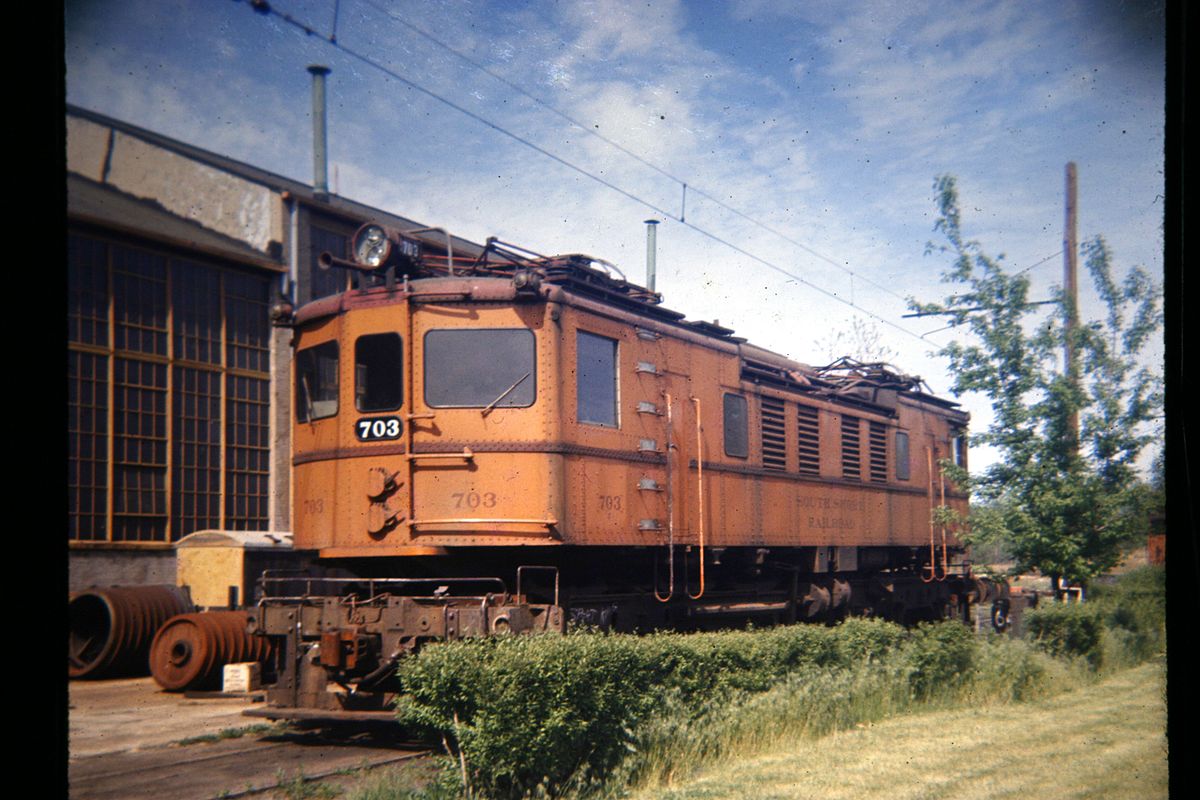 |
| "19660529 09 South Shore Line 703 @ Michigan City Shops" by David Wilson - Flickr: 19660529 09 South Shore Line #703 @ Michigan City Shops. Licensed under CC BY 2.0 via Wikimedia Commons. |
The 700s were the other hand-me-down freight engines in the final years of electric freight operations on the South Shore. They began life on the New York Central as R-2s, where they drew power from 660VDC third rail in the tunnels and suburban lines around New York City. Diesels were able to work the tunnels in NY, thus saving the NYC time and money by eliminating the need for engine changes. South Shore picked up seven R-2s between 1955 and 1967, added pantographs, changed other carbody appurtenances, and rewired them for 1500VDC operations.
 |
| Nickel Plate Products CSS&SB 700 in HO. |
Nickel Plate Products imported a Japanese model of the 700 in brass in HO during the mid 1970s. It is a notoriously bad runner with a tendency to crack its gears. Its minimum track radius of 22" is somewhat surprising, given the model's short overall length and wheelbase. The pantographs are also typical 1970s fare--not intended to actually contact wire, barely stay retracted/folded, and look not quite right. The small 'footprint' of pantographs may necessitate actually scratchbuilding replacements. Still, it's a beautiful, chunky model with a lot of butch, gnarly detail. I have one in my collection, and I plan to eventually re-work its drive, install DCC and lighting, and paint it. Maybe another will come along to join the Dunes Junction roster.
I have a pair of the Nickel Plate Products CSS&SB 700's. Ironically, they run great. No split gears. . .yet! I painted one as the 705, the other 707 with the zebra stripes. I would add the photos, I don't see anything here how to attach them.
ReplyDelete